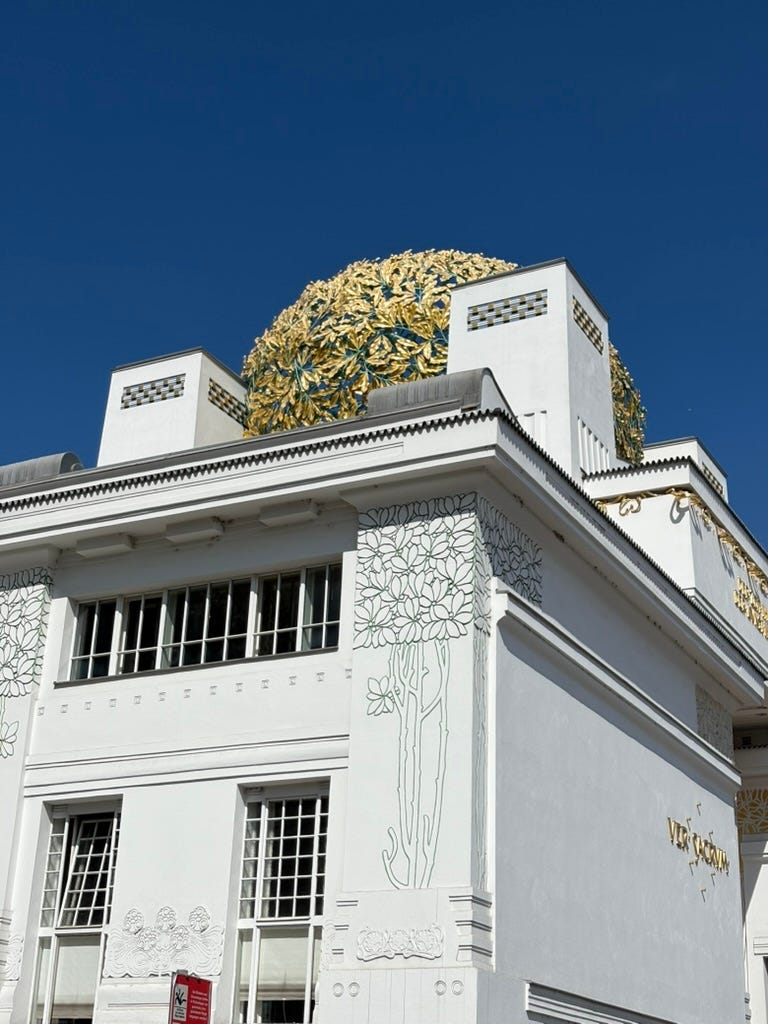The Steel Magnate’s Revenge: How Vienna Invented Modern Democracy’s Self-Destruction
A tale of two Karls.
I wasn’t going to write this week, so forgive a rush job…
Standing inside Vienna’s Secession building this weekend, I looked at the founders’ names in metal relief: Rudolf von Alt, Theodor Hörmann, Karl Wittgenstein. Two minor Austrian artists providing political cover, and then that last familiar name, Wittgenstein. The philosopher Ludwig’s father – a Jewish convert to Protestantism and Austria-Hungary’s second richest man. A steel magnate who had funded a shrine to artistic freedom with a fortune forged from crushing workers and stealing companies.
He once forced a Jewish business partner – another tycoon who bought his Ringstrasse palace with 750,000 guilders in cash – to conduct a negotiation over lunch at the Hotel Sacher, where neither would be welcome. Then he bought the man’s company using its own money.
Wittgenstein had expelled striking families from company housing in winter, dragging their children from their beds. The Arbeiter-Zeitung called him an exploiter who extracted “the marrow of his workers.”
Yet this was the fortune that built the Secession, funded Klimt and Schiele, and supported the artists who would define modernism.
The building’s motto gleams above its lintel: “Der Zeit ihre Kunst. Der Kunst ihre Freiheit” – to every era its art, to art its freedom. But what kind of freedom springs from such foundations?
The answer came when I discovered what else was happening when the Secession opened its doors at the beginning of April 1897.
Keep reading with a 7-day free trial
Subscribe to 7 THINGS to keep reading this post and get 7 days of free access to the full post archives.



